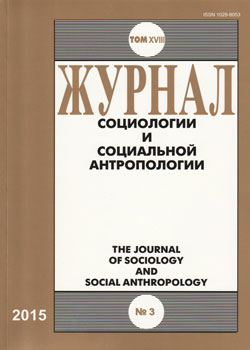Образ территории и территориальная идентификация жителей Ямало-Ненецкого АО
Ключевые слова:
территориальная идентификация, территориальная общность, образ территории, Ямало-Ненецкий автономный округ
Аннотация
В основе статьи лежат материалы собранных автором биографических интервью и проведенного в 2013-2014 гг. прикладного исследования, в котором использовался метод фокус-группы. В статье поднимается несколько вопросов исследования территориальной идентификации. Первое — это роль рутинного, разделяемого всеми опыта жителя территории в идентификации с территориальной общностью. Восприятие климатических условий и других «лишений», работы и досуга, феномен «временщичества», длинные северные отпуска, делящие год на части и другие социокультурные особенности территории важны для понимания идентичности и наиболее общих тенденций в общественном мнении ямальцев. Второе — механизм конструирования значения общности через обращение к истории и сопоставление с другими на основе значимых характеристик. Смыслы, диктуемые историей региона и повседневной жизнью современных ямальцев, преломляются через сравнение с образами других значимых территорий — «землей» в целом, Москвой, крупными региональными центрами, депрессивными в социально-экономическом отношении регионами, развитыми северными территориями, например, такими популярными образцами социального благополучия, как скандинавские страны. Третье — различие между сложившимся образом территории и образом территориальной общности. Публичный дискурс о территории (полярный круг, богатство земли полезными ископаемыми, амбициозные инфраструктурные проекты и пр.) создает образ уникальный и привлекательный, но может не создавать образов для идентификации современных жителей. Предметы гордости могут находиться в иной плоскости, нежели те смыслы, которые жителям приятно примерять к себе. Наконец — в разных контекстах может использоваться не одна, а несколько значимых территориальных категорий, несущих разное смысловое наполнение и выражающих гордость, солидарность, привязанность к территории — северяне, Ямал, Арктика, городские общности.
Опубликован
2015-05-20
Как цитировать
Макушева, М. (2015). Образ территории и территориальная идентификация жителей Ямало-Ненецкого АО . ЖУРНАЛ СОЦИОЛОГИИ И СОЦИАЛЬНОЙ АНТРОПОЛОГИИ, 18(3), 153–166. извлечено от http://jourssa.ru/jourssa/article/view/405
Раздел
Исследования идентичности

